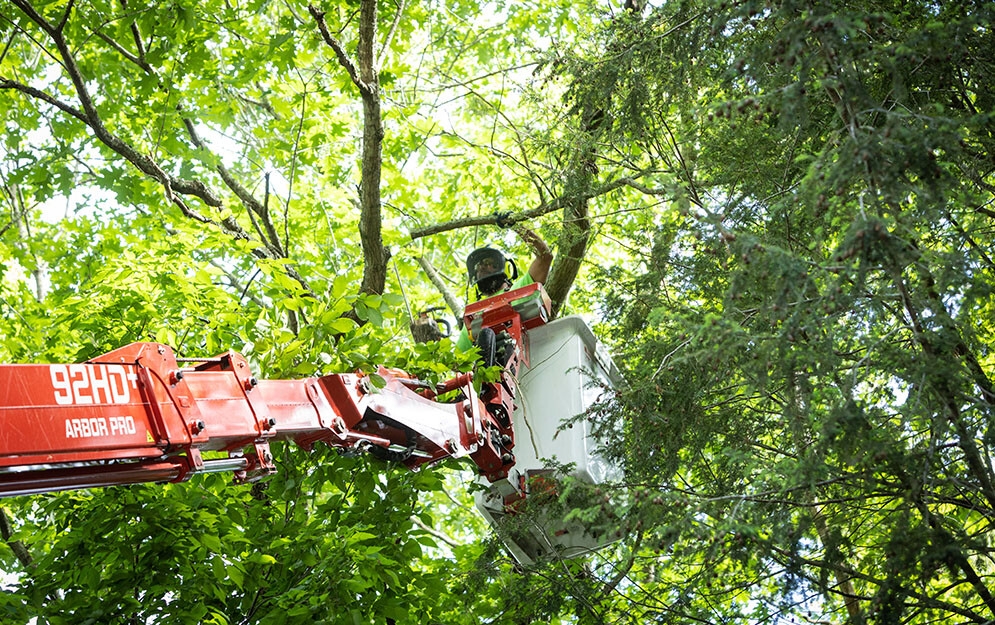Arborists vs. Garden Designers: Recognizing the Differences
Regarding maintaining the vitality and beauty of our landscapes, two professions that are frequently mentioned: tree professionals and garden designers. While both play crucial roles in beautifying natural environments, their specialties and focus are quite distinct. Recognizing these distinctions can help homeowners make informed decisions about tree maintenance and garden management.
Arborists are expert tree care workers who hold an profound expertise of tree biology, wellness, and maintenance. Their education equips them to address everything from tree pruning and disease diagnosis to safety evaluations and hazardous tree disposal. In contrast, landscapers focus on the aesthetic aspects of landscapes, including planting, design, and care of flowerbeds and lawns. By recognizing the unique skills and offerings provided by arborists, homeowners can better appreciate the importance of hiring a qualified professional for tree-related needs. spintax
Value of Licensed Arborists
Engaging a licensed arborist is vital for guaranteeing the health and safety of trees. Certified arborists go through intensive training and education, equipping them with the knowledge and skills required to assess tree conditions correctly. This knowledge enables them to make wise decisions regarding tree care and maintenance, which can considerably impact the longevity and vitality of trees. By selecting a certified professional, homeowners and property managers can have confidence that their trees are in competent hands.
Additionally, qualified arborists are experienced in the latest tree care techniques and best practices. This knowledge allows them to perform essential services, such as pruning, stabilizing, and disease management, with expertise. Their understanding of tree biology and ecology enables them to implement strategies that promote tree health while reducing potential hazards. This dedication to professional development affirms that they stay up-to-date with advancements in the field, ultimately benefitting the trees they care for.
In addition to improving tree health, licensed arborists play a crucial role in maintaining community safety. They are trained to identify potential risks associated with tree growth, such as instability or disease, that may pose threats to people and property. By actively addressing these issues, qualified arborists can mitigate accidents and costly damage. Their expertise in tree risk assessments is invaluable for urban tree care, where trees are often situated in close proximity to structures and vehicles.
Tree Care Knowledge and Solutions
Tree care professionals possess specialized knowledge and skills in tree care, which enables them to make knowledgeable decisions about the health and care of trees. Their expertise encompasses understanding tree biology, spotting diseases, and recognizing the signs of distress or structural issues. By combining this scientific foundation with practical experience, certified arborists can recommend the most effective practices for tree health, ensuring that each tree receives personalized care based on its species, environment, and condition.

One of the main services offered by arborists is tree pruning, which goes further than simply cutting branches. Arborists use their knowledge of tree growth patterns and biology to execute pruning that promotes healthy development, increases safety, and boosts aesthetics. They also carry out diagnostic assessments to diagnose issues such as pest infestations or diseases, providing solutions to address these problems efficiently. This knowledge is crucial, as improper pruning or neglect can lead to permanent damage or even tree loss.
In addition to pruning and diagnostics, arborists are key players in tree risk assessments and management strategies. They assess the structural integrity of trees, especially those near streets, structures, or in metropolitan environments, to avoid hazards. Their ability to recognize potential risks and recommend appropriate interventions, such as cabling or bracing, contributes significantly to maintaining safe landscapes. Overall, arborists play an essential role in promoting tree health and safety, making their services indispensable for property owners and communities alike.
Contrasting Tree Care Specialists and Garden Designers
Tree Care Specialists and landscapers often work hand-in-hand but emphasize on different aspects of arboreal and landscape management. Tree Care Specialists specialize in the maintenance and nurturing of trees, utilizing their knowledge of arboreal biology, vitality, and safety. They are skilled to diagnose tree diseases, perform pruning, and implement arboreal preservation techniques, ensuring that the arboreal structures are rigorous and safe for the surrounding environment. Garden designers, on the contrary hand, focus on the overall aesthetics and functionality of outdoor spaces, which entails planting floral designs, creating gardens, and maintaining green spaces.
One significant difference lies in the expertise and tools each professional uses. Tree Care Specialists are equipped with specific expertise about tree care, using tools such as chainsaws, ropes and harnesses, and specialized trimming equipment to maintain tree well-being and safety. They assess tree risk, recommend remedies for ailments, and carry out complex arboreal removal or cutting methods. Landscapers typically employ tools more oriented on floriculture and land design, such as shovels, grass cutters, and soil conditioners. While both professions necessitate physical labor, the focus and skills are markedly different.
Collaboration between tree care specialists and landscapers can enhance property worth and aesthetic appeal. For Tree Service Nassau , while a landscaper might design an inviting garden layout, an tree care specialist can ensure that the trees within that design are thriving and pose no risk to structural integrity. Understanding the roles of each can lead to more effective decision-making for property maintenance and enhancement, resulting in a more robust and more attractive environment.